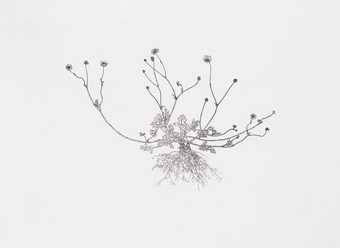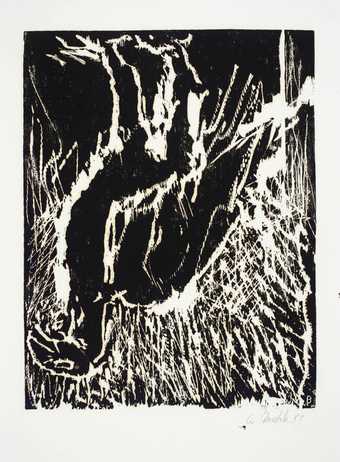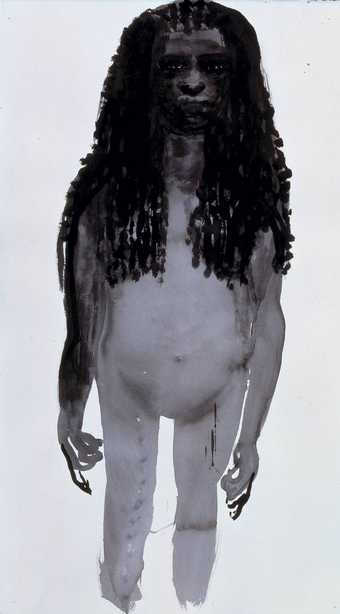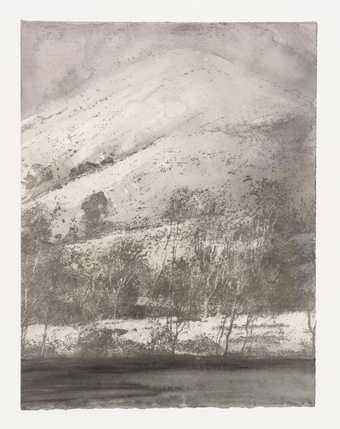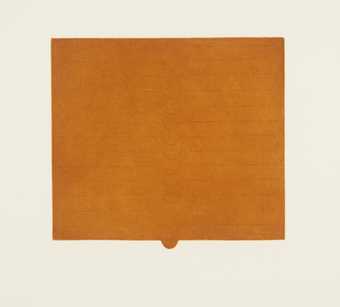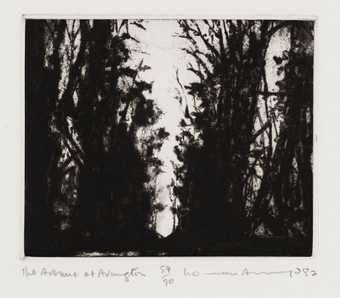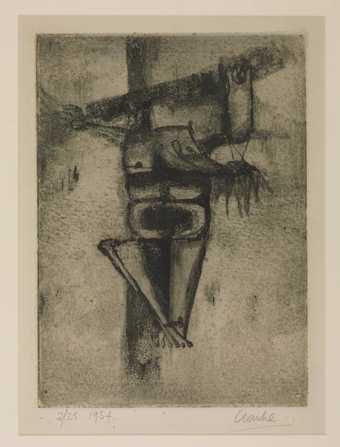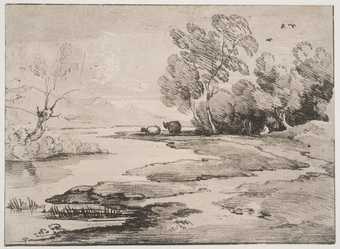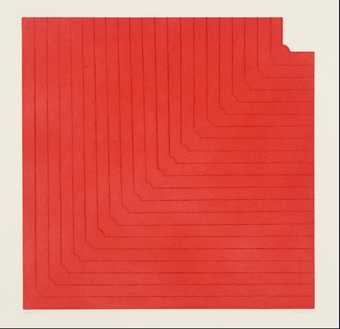
Kim Lim
Red Aquatint
(1972)
Tate
Like etching, aquatint is an intaglio printmaking technique, but is used to create tonal effects rather than lines. Intaglio refers to printing and printmaking techniques in which the image is incised into a surface, and the incised line or sunken area holds the ink.
Fine particles of acid-resistant material, such as powdered rosin, are attached to a printing plate by heating. The plate is then immersed in an acid bath, just like etching. The acid eats into the metal around the particles to produce a granular pattern of tiny indented rings. These hold sufficient ink to give the effect of an area of wash when inked and printed. The extent of the printed areas can be controlled by varnishing those parts of the plate to appear white in the final design. Gradations of tone can be achieved by varying the length of time in the acid bath; longer periods produce more deeply-bitten rings, which print darker areas of tone. The technique was developed in France in the 1760s, and became popular in Britain in the late eighteenth and early nineteenth centuries. It is often used in combination with other intaglio techniques.

